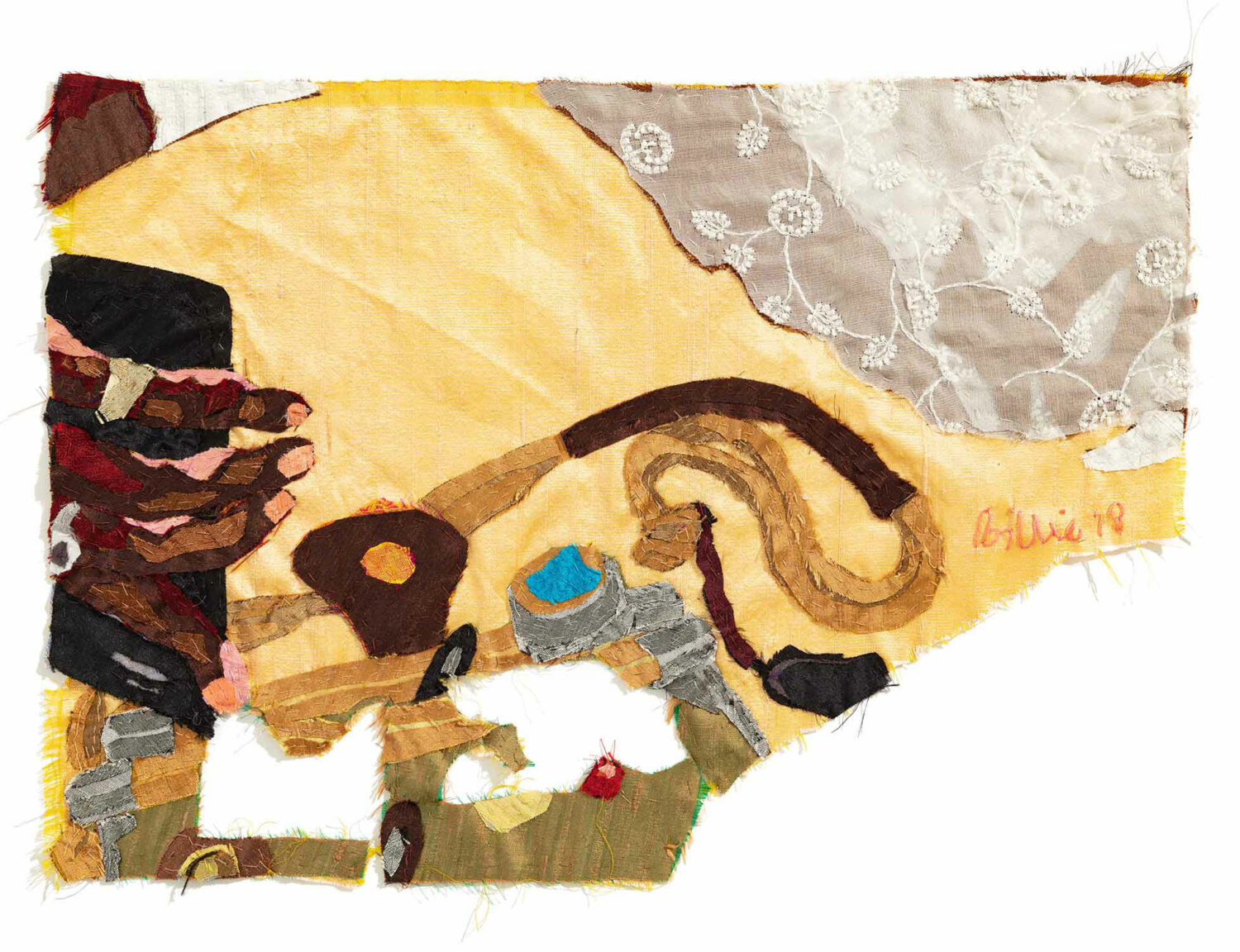5 Contemporary Artists Pushing The Possibilities Of Embroidery
By Something CuratedAs the need to tailor, repair and reinforce cloth birthed diverse sewing techniques, the decorative potential of these advancements led to the art of embroidery. Variations of the practice grew in prevalence as so-called Folk art, using materials that were accessible to non-professionals. Examples include Hardanger from Norway, Merezhka from Ukraine, Mountmellick embroidery from Ireland, Nakshi kantha from Bangladesh and West Bengal, and Brazilian embroidery. Many techniques had a practical use such as Sashiko from Japan, which was used as a way to reinforce clothing. While historically viewed as a pastime or hobby, closely associated with women and the domestic, embroidery has often been used as a form of biography. Expanding on and subverting this legacy, Something Curated highlights the practices of five contemporary artists pushing the possibilities of embroidery today.
Billie Zangewa

Hailing from Blantyre, Malawi, artist Billie Zangewa creates intricate collages composed of hand-stitched fragments of raw silk. Her early works comprise embroideries on found fabrics depicting remembered botanical scenes and animals from Botswana, where the artist was raised, but she soon transitioned to creating cityscapes, focusing on her experience as a woman in the city of Johannesburg and her personal relationships. These figurative compositions explore contemporary intersectional identity in an attempt to challenge the historical stereotype, objectification, and exploitation of the Black female form. Beginning her career in the fashion and advertising industries, Zangewa employs her understanding of textiles to portray personal and universal experiences through domestic interiors, urban landscapes, and portraiture.
Jordan Nassar

Jordan Nassar’s multidisciplinary practice engages craft to explore ideas of heritage and homeland. Through hand-embroidery and wood inlay, among other outputs, he examines issues of identity, diaspora and cultural participation. Nassar often employs “the landscape” as a thread throughout these different mediums, carefully mapping out patterns and repeatedly intercepting them, using fields of colour to define rolling hills and expanses of water. The artist has adapted the matrilineally-learned tradition of Palestinian tatreez, or cross stitch, most often found on pillows, clothing, and other domestic arts, to mirror his hybridised upbringing. His childhood home in the U.S. was decorated with such objects, which his father brought back from visits to his ancestral homeland. Each hand-embroidered work is stretched and framed, bringing Nassar’s embroidery practice into a dialogue with painting.
Dindga McCannon

Dindga McCannon is a multimedia artist, educator, writer and illustrator. Through her art practice, she has combined traditional quilting and embroidery techniques with various mediums more conventionally associated with fine art, bridging histories and shining a light on stories lost to the past. She often unites needlework, a craft she inherited from her mother and grandmother, with drawing, painting, and printmaking. Her pieces honour the women who she says opened the door for her, while also pushing that door open still further for others. In the 1960s, McCannon was a founding member of the Where We At artist collective; their chief focus was addressing racism in the arts and, in particular, feminist art of the period, during a time in which feminist art was predominantly focused on the issues of White middle-class women.
Kazuhito Takadoi

As a young child, Japanese artist Kazuhito Takadoi enjoyed working with his grandfather in the garden, though his real interest in plants began when his aunt bought him a book on herbs for his twelfth birthday. Captivated by the possibilities of nature, Kazuhito trained in agriculture and horticulture in Japan, the US and the UK, before studying fine art and garden design. The artist’s work combines the formality of Eastern discipline with abstraction from Western art. He forms delicate structures by harvesting grass, leaves and twigs cultivated in his garden. Each element is dried in his studio and then sewn onto paper. As the grasses dry and mature, they embark on a subtle colour shift, nodding to the changing seasons. All the materials are used just as they grow in nature, with no added colours.
Sophia Narrett

Sophia Narrett employs the slow and meticulous process of embroidery in response to the increasingly fast pace of contemporary media. Working with thread, she transforms the historically domesticated medium into a tool to explore the liberties and restrictions of modern womanhood. She crafts expansively detailed narratives, in dialogue with the rise of American advertising and the feminist art movement, where earthly delights feast in familiar pop culture. Often selecting images from the internet as source material, she repurposes the language of the digital era, disrupting the representation of female sexuality and nudity in mass media. Narrett crafts expansive realms of love and self-discovery, incorporating multiple perspectives to explore the intricacy of desire in the algorithmic age.
Feature image: Sophia Narrett, Stuck, 2016. © Sophia Narrett